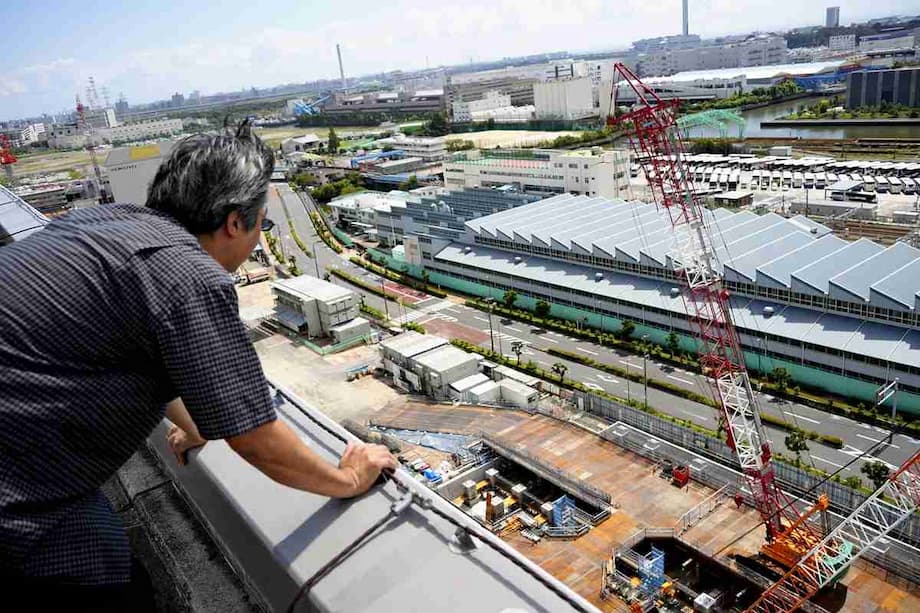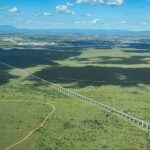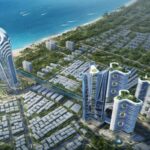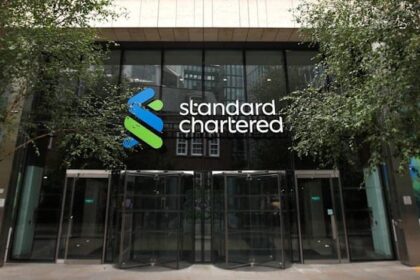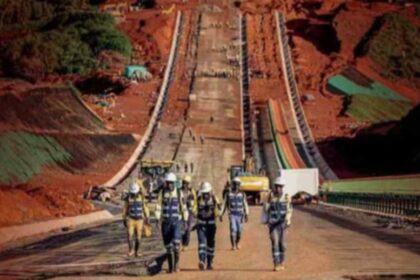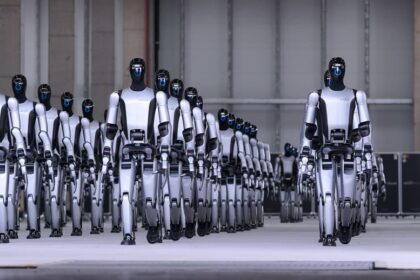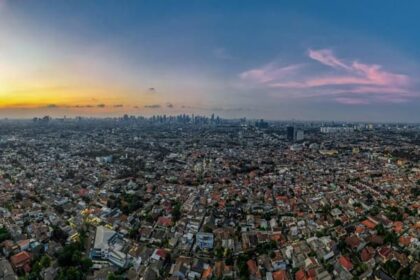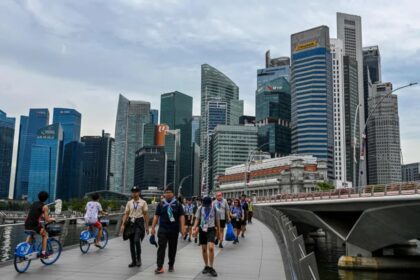A city meets the data surge near its homes
Across Tokyo, the infrastructure that powers cloud computing and artificial intelligence is rising next to apartments, schools, and quiet streets. New data centers promise faster services and economic activity, yet they bring constant cooling equipment, round the clock operations, and more heavy power use. In places like Koto Ward’s Shiohama district, residents living beside construction sites say they worry about a persistent hum from rooftop machinery and warm air vented toward nearby buildings. The concern is not abstract. Servers produce large amounts of heat that must be expelled outside, and cooling fans, chillers, and pumps can be audible at all hours.
- A city meets the data surge near its homes
- Why Tokyo neighborhoods are in the crosshairs
- Heat, noise, and the science of data center cooling
- Noise and power quality in residential areas
- Where policy stands, and what is changing
- The economic case and the scale of buildout
- Where data centers go next in Japan: Tokyo and Osaka
- Can green design reduce neighborhood impacts?
- What residents want and how companies can respond
- What to Know
There are no specific national laws in Japan that regulate heat discharge from data centers, which has left residents and local governments to press companies for protections. In Koto Ward, the ward office moved up its construction notification rule for data center projects to at least 120 days before permit applications, from 90 days, and asked companies to show exactly where outdoor compressor units will sit. Friction has also surfaced in Hino and Akishima as facilities take shape near homes. The construction cycle is accelerating because data demand is exploding. A large share of Japan’s data centers, an estimated 63 percent, sits in the Kanto region that includes Tokyo. Analysts value the domestic market in the trillions of yen and expect steady growth as cloud and AI workloads expand.
Why Tokyo neighborhoods are in the crosshairs
Data centers gravitate to urban cores for simple reasons. They need proximity to network backbones, internet exchanges, and major corporate campuses. Central Tokyo, anchored by hubs like Otemachi, delivers low latency connections that bank trading desks, video services, and AI inference systems now expect. Equipment vendors, construction teams, and operations specialists are nearby, which lowers cost and speeds maintenance. Utilities can sometimes provide short routes to high voltage substations, which reduces line losses. Tokyo’s geography and dense land use also mean industrial zones and residential blocks sit closer together than in many other cities, so facilities and homes often share a boundary wall.
Operators argue that placing a facility within the city simplifies service delivery, meets strict uptime targets, and reduces long fiber runs. Residents counter that the constant noise and warm exhaust, even if within current rules, erode daily comfort and may worsen local heat effects in summer. The balance between digital convenience and neighborhood livability is at the center of a fast evolving debate.
Heat, noise, and the science of data center cooling
Every watt consumed by a server eventually becomes heat. That heat must be removed, usually by moving air across hot components or by circulating chilled water through coils. The heat is then rejected to the outdoors through equipment like dry coolers, chillers, cooling towers, and air handling units. These machines generate sound, especially at night when the background noise level is lower, and they expel warm air. The combination can be frustrating for residents who expected warehouse level activity, not a continuous low frequency hum and a stream of heated air that can feel out of place in a residential district.
How servers are cooled and why it matters
Cooling strategies vary. Many urban facilities rely on air cooled systems that reject heat to the outside air. Some use chilled water produced by electric chillers. Others pursue fresh air or free cooling when outside temperatures allow, which can reduce energy consumption. Research in a Tokyo suburb on a compact container data center that relied on direct fresh air cooling, supported by evaporative cooling and careful control of humidity and temperature, recorded about 20 percent annual energy savings compared to conventional air conditioning. The system achieved a reported power usage effectiveness near 1.06. That figure, known as PUE, represents total facility energy divided by energy used by IT equipment. A lower PUE means less energy goes to overhead like cooling and lighting, which can also translate to less waste heat and lower operating noise if fans and pumps run at lower speeds for more hours of the year.
Design choices matter at street level. Locating heat rejection equipment on rooftops or away from building lines shared with neighbors can change who experiences the warm air plume. Acoustic enclosures, baffles, and variable speed drives can reduce tonal noise and avoid sudden nighttime changes in sound. Setbacks and barriers can redirect air flow upward. These are not one size fits all solutions, but they are known practices in mechanical engineering and can meaningfully improve outcomes when applied early in a project.
Can waste heat be managed in cities?
Residents often describe anxiety about a heat island effect around large facilities. The fear is that thousands of servers pushing out warm air will drive up local temperatures in ways that feel unavoidable. Cities with district energy systems sometimes repurpose data center heat for nearby buildings or swimming pools. Tokyo does not yet have broad reuse networks tied to data centers, and there is no national standard governing heat discharge. Clearer rules could help. Modeling of heat plumes during design, limits on exhaust temperature at the property line, and scheduled maintenance during cooler periods are practical measures. Even simple steps, such as orienting exhaust away from neighboring windows and adding vegetation barriers, can reduce the felt burden around a site.
Noise and power quality in residential areas
Noise from data centers typically comes from fans, compressors, and pumps. A steady drone can be more intrusive than short construction bursts because it never stops. Low frequency components travel farther and pass through walls more easily, which is why neighbors may notice a hum late at night. Facilities often include silencers and acoustic treatment, but effectiveness depends on load level, equipment selection, and distance to nearby homes. Beyond sound, modern facilities draw large amounts of electricity at very steady rates. In some places overseas, researchers tracking power quality inside homes have reported more frequent electrical harmonics near clusters of large facilities. Harmonics can stress appliances and sensitive electronics if they exceed standards, although utility companies often dispute the scope of the problem and point to grid measurements that remain within limits.
What residents report and what utilities say
Bob Marshall, chief executive of a major residential power quality monitoring company, described harmonics as an early warning signal for grid stress, based on a large sensor network of household devices. He said the pattern appears more pronounced in areas with large facilities drawing continuous loads.
Harmonics are a pretty good canary in the coal mine for early signs of stress and problems.
Utility providers counter that data collected inside homes does not directly capture conditions on the distribution grid and that measured levels frequently sit within industry standards. John Schoen, a spokesperson for a large Midwestern utility in the United States, framed the caution this way:
ComEd strongly questions the accuracy and underlying assumptions of Whisker Labs claims. Ting devices are installed in the home and do not directly measure harmonics on the grid.
Another major utility has said it has not seen distortion levels that exceed standards in its measurements, and that isolated issues tied to new equipment configurations were resolved quickly. The Tokyo context differs in many ways, yet the debate highlights what can happen when large new loads arrive faster than upgrades to local lines and transformers. Cities can reduce risk by planning capacity increases ahead of demand peaks and by placing power quality monitors near new facilities. When signal anomalies appear, operators and utilities can adjust equipment settings, add filters, or spread load across feeders to restore power quality.
Where policy stands, and what is changing
Japan lacks specific national rules that control how much heat a facility can discharge or how that heat must be managed. Local governments are starting to fill gaps. Koto Ward extended its early notice requirement for data center projects to 120 days before building certification applications and urged developers to map exactly where outdoor equipment would sit. The aim is simple. Neighbors deserve to know how a site will operate and how heat and noise will be handled well before machines arrive on rooftops.
Experts in information science warn that disputes will grow as the buildout continues and have called for environmental guidelines that reduce anxiety and establish clear expectations. A standard could include daytime and nighttime noise thresholds, heat plume modeling during design, continuous sound monitoring during operations, and public reporting. Guidance could also cover fan speed limits after certain hours, limits on exhaust temperature at the property line, and mandatory complaint response timelines. With clear baselines, operators would compete to meet and exceed standards, rather than argue about unknowns.
The industry is moving too. The Japan Data Center Council, which includes operators and construction firms, plans to publish a guideline to protect nearby environments and to address resident concerns. Naohiro Masunaga, who heads the council’s secretariat, acknowledged where the sector has fallen short and what must change.
It cannot be denied that explanations to residents who may be affected were insufficient in some cases and that a process must be created to seek the understanding of nearby residents.
The economic case and the scale of buildout
Digital infrastructure supports finance, manufacturing, media, logistics, and an expanding world of AI services. The Japanese data center market, measured in billions of dollars, is expected to grow through decade’s end. Investment plans point to more than two gigawatts of power capacity that is planned or under construction across the country. Submarine cable projects are expanding the national backbone, which enables faster international links for cloud providers and content platforms. That growth adds urgency to the policy debate because the next wave of sites is already on the drawing board.
National energy and industry policy is evolving. A government plan known as the GX 2040 Vision calls for relocating some power hungry industries, including data centers and semiconductor plants, closer to low carbon energy hubs such as offshore wind and nuclear sites. The goal is to match large loads with cleaner power and to strengthen energy security while keeping industry competitive. For Tokyo, that could mean some future capacity grows outside the capital, which reduces pressure on dense neighborhoods and spreads investment to other regions. It does not erase the need to manage the many sites that will remain in and around the city.
Large domestic operators such as NTT Communications, AT TOKYO, KDDI’s Telehouse, Fujitsu, and IDC Frontier are active along with global providers like Equinix and Digital Realty. New entrants include firms planning advanced sites tailored for AI. Hyperscale projects from major cloud companies are also shifting the mix, which can change how much capacity sits in colocation space versus dedicated campuses. Market forecasts point to steady growth in Tokyo and Osaka, with regional players investing in both areas.
Where data centers go next in Japan: Tokyo and Osaka
The Kanto region remains the heart of the country’s digital infrastructure, but the Kansai region is rising quickly. A planned campus in the greater Osaka Kyoto area aims to deliver more than 200 megawatts of capacity by 2027, with designs intended for dense AI and high performance workloads. Analysts project the Osaka colocation market will more than double by 2030. That momentum complements Tokyo, which will continue to host a large share of network rich facilities close to enterprise customers.
In central Tokyo, a new facility called TYO7 opened in Nihonbashi near the Otemachi network core. The site, developed by a data center platform working with a major real estate company, targets energy efficient operations and aims for LEED Silver certification. The project reflects a trend in the capital, where real estate firms and digital infrastructure operators partner to fit secure, high power buildings into tight urban lots while pledging to reduce environmental impact. For neighborhoods, such projects show that siting centers within the city is possible, yet they also underscore why predictable standards are needed to protect nearby homes.
Communities beyond the central wards face the same questions. Residents in Hino and Akishima have sought more transparency over equipment placement, exhaust paths, and maintenance schedules. Local governments are updating notification rules and asking for clearer site plans, a sign that public expectations are shifting toward earlier and more detailed engagement.
Can green design reduce neighborhood impacts?
Examples already exist in Japan of facilities built to reduce energy use and fit into surroundings. One Tokyo site that opened in the last decade achieved a PUE around 1.28 at design by separating the server floor from the facilities floor, improving air flow control, and using free cooling and high temperature chilled water when weather conditions allow. The operator adopted an environmental management system, expanded renewable energy use across its portfolio, and added landscaping, wall greening, and rooftop gardens to soften the building’s presence. The site earned awards for energy efficient design and was certified as a top level facility under Tokyo’s cap and trade program.
Cooling technology keeps improving. Direct fresh air cooling, supported by evaporative methods, can work in greater Tokyo during parts of the year. Variable speed fans and pumps avoid sudden jumps in noise. Acoustic treatments reduce tonal peaks that neighbors find most annoying. Locating intake and exhaust away from property lines, and routing exhaust upward to dissipate heat, keep the warm air plume off windows and sidewalks. When space allows, vertical thermal storage tanks can shift cooling loads to off peak hours, which reduces strain on the grid and can lower noise when neighborhoods are quiet. These are practical, proven tools, not speculative ideas.
Sustainability targets from operators are becoming more ambitious. KDDI’s Telehouse arm has set near term milestones for renewable energy usage and net zero operations. NTT has pledged to reach net zero emissions in the 2040 time frame across its data center business. Global operators report high renewable coverage and improving efficiency metrics year after year. For residents, the key questions are local. How quiet will the site be at night. How hot will the exhaust feel at the property line in summer. The answers depend on equipment selection, site layout, and the strength of rules that hold operators to measurable standards.
What residents want and how companies can respond
Residents consistently ask for earlier notice, clearer site diagrams, and reliable contacts. A practical package could include a construction and operations hotline, a project website with equipment locations and sound modeling, and a pledge to brief neighborhood associations at key milestones. After opening, operators can post real time noise and exhaust temperature readings from sensors at the property line. Alert thresholds would trigger a response and a public log would show how and when issues were resolved. These steps build trust and reduce uncertainty.
Design choices can ease tensions. Place loud equipment on the building side farthest from homes. Use acoustic screens and louvers that target the frequency bands residents hear most. Tune fans to a lower night mode where possible. Use free cooling and high temperature chilled water to keep compressors off during cool months. Adjust truck deliveries and routine maintenance to daylight hours. Plant trees and shrubs that both absorb sound and push exhaust upward.
Communities expect benefits alongside burdens. Rooftop gardens, pocket parks, and improved sidewalks can be part of the site plan. Operators can create internships and training programs that connect local residents to data center jobs. On the energy side, adding on site solar where space permits, backing facilities with battery storage, and signing power purchase agreements for clean electricity reduce emissions and, in some cases, help with grid stability. City and ward governments can require power quality monitoring near new sites and set escalation paths with utilities to respond to any unusual readings.
What to Know
- Tokyo faces a rapid increase in data center construction near residential areas, driven by AI and cloud demand.
- Residents report anxiety about round the clock noise and warm exhaust air, and there is no national rule on heat discharge.
- Koto Ward now requires at least 120 days of advance notice for data center projects and clearer equipment site maps.
- Experts urge environmental guidelines that set noise and heat limits, require monitoring, and formalize community engagement.
- The Japan Data Center Council plans its own guideline, with its secretariat acknowledging past shortfalls in resident communication.
- Market growth is strong, with more than two gigawatts of new capacity planned or under construction and new submarine cables on the way.
- A government plan encourages locating future facilities near low carbon energy hubs to align large loads with cleaner power.
- Osaka’s market is expanding fast, complementing Tokyo’s dominant role and attracting large campus investments.
- Efficiency and design matter. Proven measures can cut energy use, lower noise, and redirect exhaust to reduce neighborhood impact.
- Early notice, transparent monitoring, and clear response procedures help companies earn trust and keep projects on track.


